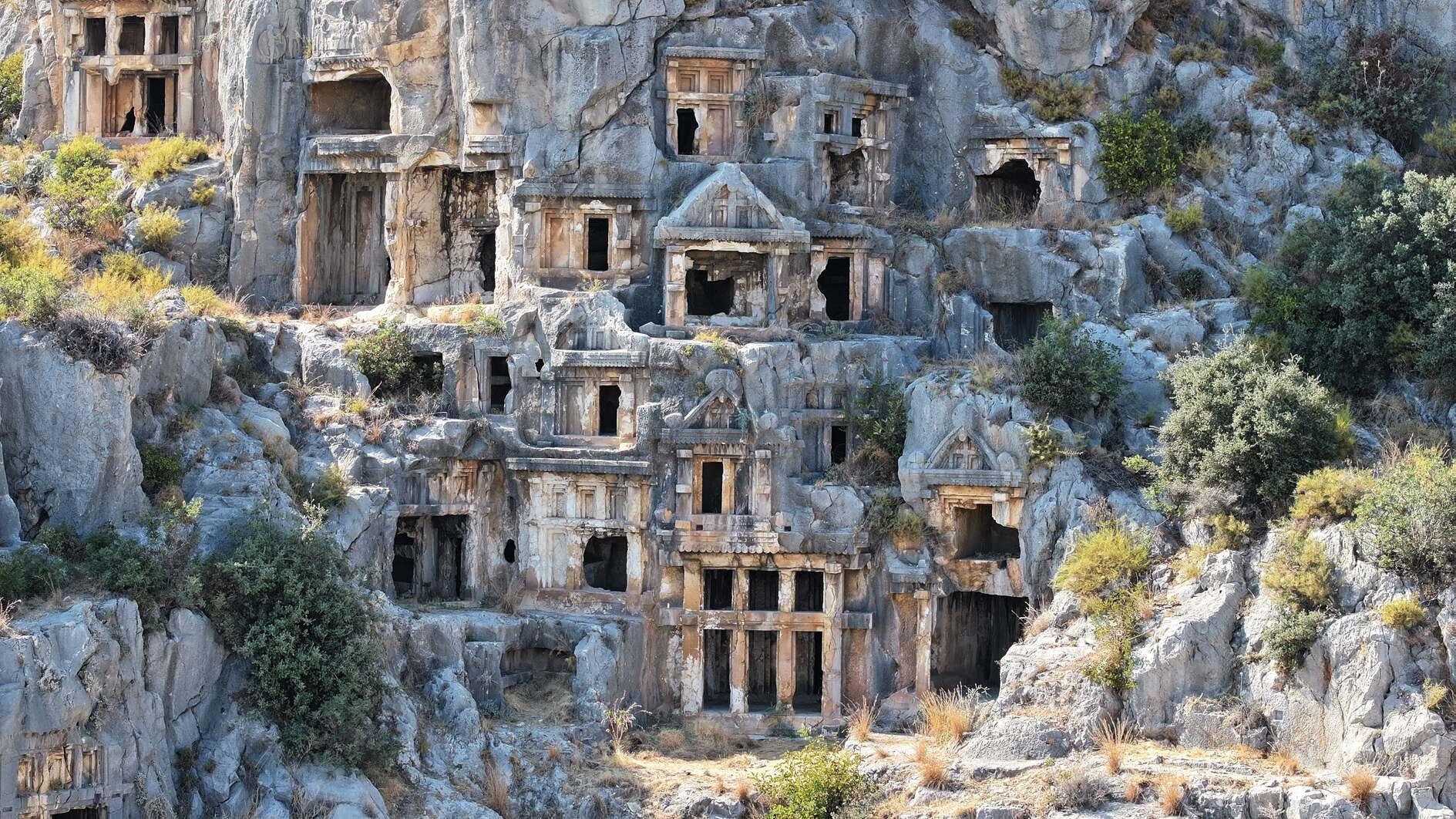
The Heritage to the Future Project in Andriake, the port area of the ancient city of Myra located in Antalya's Demre district, focuses on completing the walking route within the port and safeguarding the structures in the port center through conservation efforts.
Work has been ongoing since 2009 in the ancient city of Myra and its port Andriake, one of the most important metropolises of Lycia from the classical age to Rome and the Christian era when it was the capital. The ancient city attracts visitors with rock tombs from the classical Lycian period, acropolis structures, a Roman theater with a capacity of 11,000 people, baths and the St. Nicholas Church from the Byzantine era.
Andriake was one of the busiest and most magnificent ports of the ancient Mediterranean.
Excavations in Andriake have so far unearthed the granarium (grain depot), which now houses the Museum of Lycian Civilizations, along with the agora, baths, churches, synagogue and the monumental structures of Tiberius Square. Intensive excavation, preservation and environmental landscaping efforts continue under the Heritage for the Future Project.
Professor Nevzat Çevik, the head of the Myra-Andriake excavations and faculty member at Akdeniz University’s Department of Archaeology, stated that the excavations in the region entered their 15th year and continue year-round.
Stating that Andriake Port was among the most magnificent and lively ports of the ancient Mediterranean, Çevik stated that excavation and conservation work in the granarium, agora, baths, necropolis, port structures, churches, synagogue, shipyard and shop areas in the port center had been largely completed so far.
He emphasized that they are currently focusing on excavating the customs area of the port as part of the project, adding: “Our goal is to ensure that no structure remains unexcavated, unrestored or unprotected along the walking route of Andriake, which now serves as an open-air museum. The final pieces of the puzzle will be uncovered with this project, completing a comprehensive vision of the port's urban planning. In the customs area, excavations in front of the agora have been ongoing for seven months, and we expect to complete the project within four to five years.”
He noted that visitors will eventually be able to enter the port, walk around the Museum of Lycian Civilizations and exit through the front of the port, following a complete walking route.
Çevik also revealed plans to rehabilitate the marshland in front of the port in the coming years by transforming it into a walking path.
"We will rehabilitate the marshland area along the port's shoreline and convert the work path where we are conducting excavations into a walking path. We will also place a wooden bridge to allow crossing to the other side. This will complete the enchanting atmosphere of the port and we will finish the arrangements that will better depict the port life of the 2nd century during the Roman period. During our excavations, we have unearthed, cleaned, restored and reerected the shops in the area. When you enter the port center, you can clearly see the port structures from the Roman period. We have already transformed it into an attraction with a museum, which displays many small objects and items that tell the story of the Lycian civilization. Our museum and open-air museum are ready, and all these elements will be integrated with the project we are carrying out. Now, we are trying to do full justice to this attractive area that we have been creating for 15 years, right in the center of Lycia and in the bosom of Kekova.”
He also mentioned that many significant discoveries, some firsts in Türkiye, have been made during the excavations.
Çevik noted that one of the upcoming projects involves completing the excavation and restoration of the 11,000-seat theater in Myra, the region’s largest and best-preserved theater. They plan to use original construction materials to reconstruct the theater’s stage building.
“We are currently working on a project with the ministry for this. Then we will start the implementation phase. This is something that will be completed in four to five years. When the project is completed, we want to put the original materials of the theater back in place, raise the stage building to the top of the first floor and open the theater area even more,” he said.